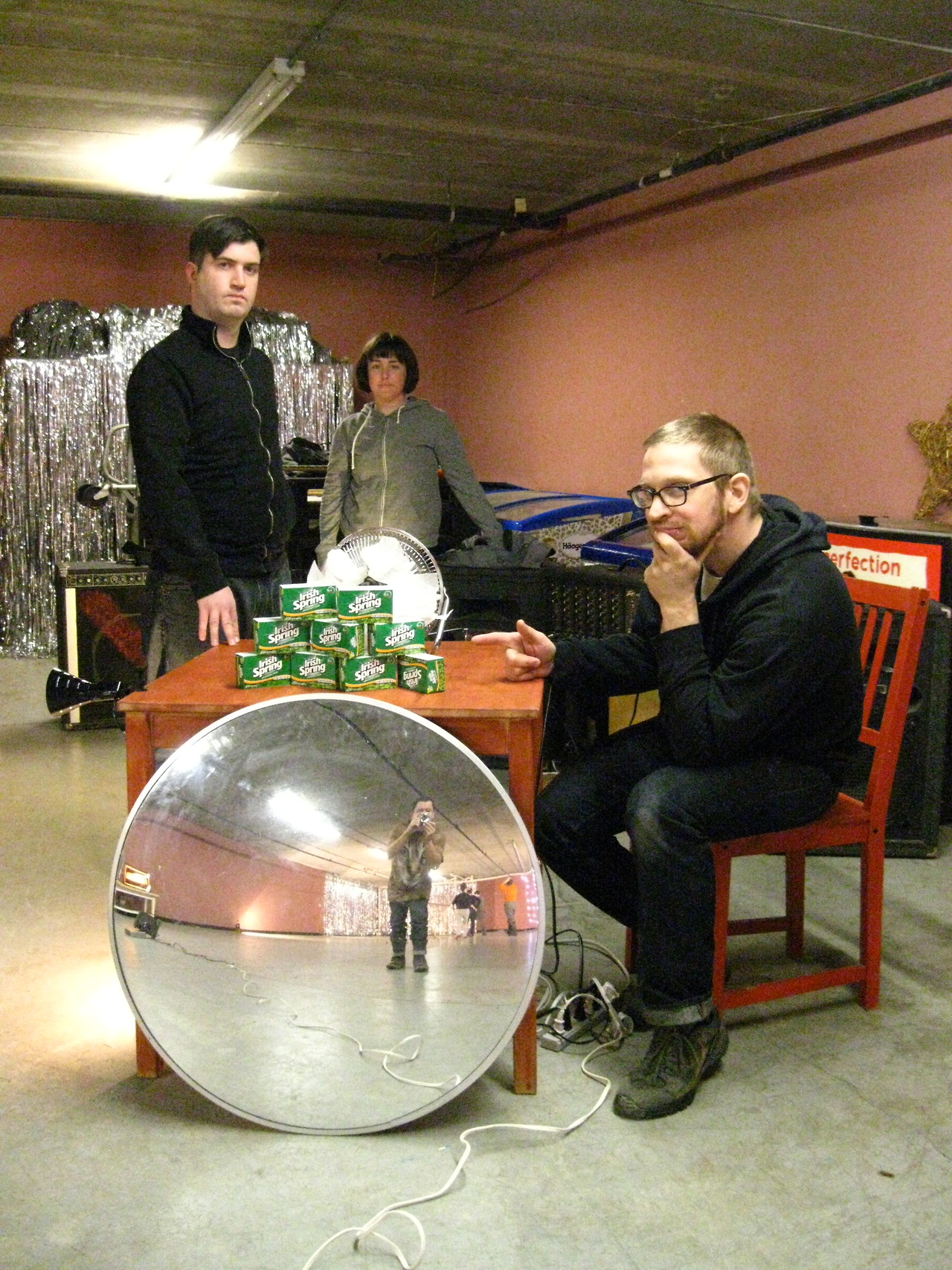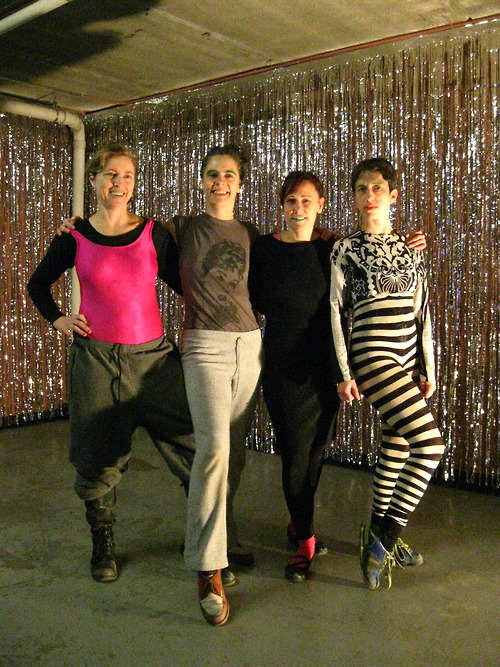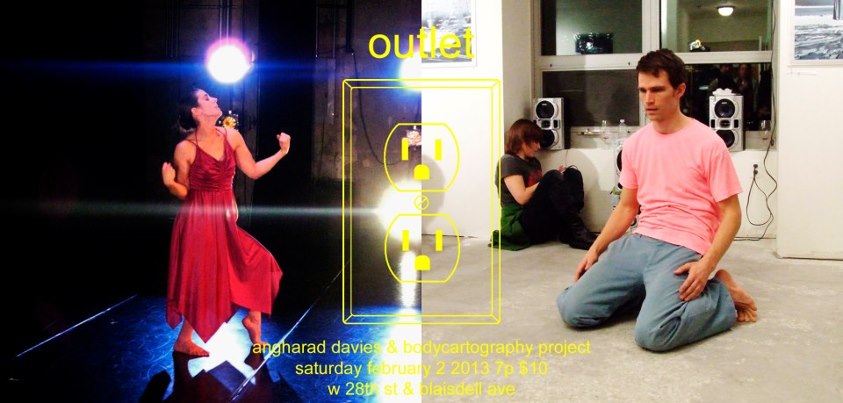Queer Freedom: the week in dance
A dispatch from Jaime Carrera's Outlet performance series and Trajal Harrell & Co's "(M)imosa/Twenty Looks or Paris is Burning at the Judson Church (M)" show in the Out There festival at the Walker.




FOR AN OPINION ON TRAJAL HARRELL & CO’S (M)imosa/Twenty Looks or Paris is Burning at the Judson Church (M), one of the shows in the Walker Art Center’s Out There festival, I’d like to refer you to Elliott Durko Lynch’s eloquent commentary on the Walker blogs.
I’m afraid, though, that Lynch’s list of required reading will scare you off. I’m also worried that, seeing Lynch’s piece and (M)imosa both relate to queerness, you’ll file them in the category of other and move on.
Don’t do that. This is important.
I’m speaking as a fellow ignoramus: I’ve been following contemporary dance here avidly for years, yet the importance of queerness has just recently burst upon me. Why is it important? Well, I have miles of reading to go before I can really speak to that, but briefly, both contemporary (postmodern, avant-garde) dance and queerness are fascinated by questions about bodies: their performance, recognition, gender, and privilege. No wonder queer theory and practice are so vital to contemporary dance, and vice versa.
But now I’m running another risk, which is that the queerness of contemporary dance will make you turn from both at once. You might be asking: Why does any of this matter? The after-school special answer is that you never know who around you is queer. But the real answer is that you are on the continuum yourself. Most of us are what’s called cisgender, meaning comfortable in our assigned gender, but I think this notion of cisgender is itself a bit of a crock. Consider your political party: Few people are dissatisfied enough to change parties or invent their own, but how many people are completely satisfied, love every last policy, every position that party identification implies? Ovaries do not imply lipstick, etc. It’s an old conversation, but the upshot is that queer freedom—a freedom that a lot of contemporary dance feels its way towards—is your freedom.
Or, let’s go back to that after-school special reason and flip it: If we keep seeing queer only as an unexpected other, we’ll never see the queer in the same, those places where even what we think of as normative crosses the tracks. (There’s an analogous argument to be made about race: Until white people place themselves in the spectrum of culture, “color” will always be other.) Seeing queer broadens the frame, gives names, work, dignity to what before seemed merely off or awkward. And that’s why we have some reading to do.
Back to (M)imosa: Briefly, as best I understand, the show attempts a rapprochement between gay and queer, in the form of Paris is Burning (the 1990 documentary film covering the gay vogue and ball scene) and Judson Church (the tremendously influential pomo dance movement of the 1960s). If this sounds oxymoronic, let me point you to this invaluable aid on the Walker blog:
In the Judson school of thought, “realness” meant to strip dance and performance of all theatricality—costumes, lighting, staging, even technical training. But in voguing, “realness” meant to immerse oneself into their desired reality so fully that the performer’s original self was unidentifiable. Choreographer/author François Chaignaud explains:
This realness, what is interesting, is that it includes all the artificial means that you may need to use. It’s this realness, Trajal was always opposing it to the authenticity of the Judson Church that was trying to get rid of all the theatrical tricks. While realness, to be real, you may use a lot of makeup, a lot of fake bra, a lot of costumes, a lot of accessories that’s going to make you be real. So this is this interesting situation where being real is not getting rid of all the cultural elements and all the artifices, but being real is using everything you may use, from hormones to costumes to heels to fake dick to pass as what you want to pass as.
(Interview with Justin Jones, TALK DANCE 27:45)
Reconciling these realnesses is vital now because—again, I just got my library card in this category—but as well as I can make it out, because of the ever-increasing importance of Judson Church and similar movements, because of the looming reality of gay marriage (and corresponding strange possibility of a straight gay life), and in general because of freedom.
So, did (M)imosa manage it? I’ll follow Lynch’s more delicately expressed critique. The show aimed at hot mess, which it achieved for some audience members already in the know, but for the uneducated, despite some sprees of wild glee, this mess was mostly tepid. I don’t think (M)imosa did enough, either, to breach feminine glamour—which needs to happen if the XX crowd is really going to feel free.
______________________________________________________
If we keep seeing queer only as an unexpected other, we’ll never see the queer in those places where even what we think of as normative crosses the tracks.
______________________________________________________
But glamour did take a beating in Hijack’s Death Drop Workshop, showing this past Saturday as part of Jaime Carrera’s Outlet series. Hijack overlapped with (M)imosa in places, throwing together vogue and ballet, rehearsal and performance, faking it and making it—but Hijack seemed to be using these themes as a temporary dress for something else moving underneath, something about risk, boundary, repetition, pressure. Still, I thought that Hijack & Co (Kristin Van Loon and Arwen Wilder were joined by Jennifer Arave and Morgan Thorson) did some real work here, Wilder in particular. I couldn’t keep my eyes off her sinuous switches: now pantherine queen, now neutral worker, now astral body, always her chameleon self.
What difficult work it is, though, to alter the perception of gender! I find it dispiriting that this whole conversation seems to keep landing on the female body, as if some one-drop rule makes the entire spectrum beyond straight cis XY guys female. That being the case, you’d guess there would be lots of room on the femme side, but no. Every time I see drag queens, I think I must be such a disappointment to them—a natural-born woman who doesn’t know anything about eyeshadow and allows herself to weigh more than a Sweet Valley Twin. And, on the other side, when Hijack & Co make fun of a slinky, “feminine” walk, I feel the need to protest that my own curvy stride is innate, that I’ve walked this way since I was twelve and first sprouted hips. An attractive, cisgender woman feeling embattled about her femininity: this would be hilarious if it weren’t a sign of the zero-sum game that gender identification still is.
Oh my god! What a thinky dance column this is, and almost devoid of dance-adjectives, like creamy. And I haven’t gotten around to telling you about the fake dick Chaignaud mentions above, which was deployed to fantastic effect by a double-jointed tight-masked freak creature clad in pointe shoes with stick-on red heels, now teetering about the stage in a backbend like a newborn fetish foal, now promising us “an anecdote about postmodern dance—some serious shit, bitch. But who cares about intelligence. . .” Also Chris Yon did A Void Dance at Outlet, which felt like a study for some new and looser work, and showed off Taryn Griggs in a solo. How she manages to be always on balance, never wrong-footed, no matter what Yon’s jigsaw choreography sends her through, is a wonder; she’s so steady that I can’t think of any emotion or state of mind that makes sense as a metaphor.
But I want to get to the moment midway through Death Drop Workshop when I was watching the quartet of women work and wondering what I was doing there, and how this admittedly difficult pomo scene connected with what I first loved as dance. What I came up with, eventually, was being. To watch Morgan Thorson mischievously adjusting herself across stage in her pink leotard and combat boots, somehow rearranging the world around her, was to witness her inimitable Morganity, which cannot really be described or explained. She put me in mind of Arturo Miles voguing the past weekend in Hip Hop! at the Cowles—all verb, no noun.
This coming weekend promises to make your mirror neurons shimmy: burlesque at the Ritz, Contempo at the Cowles, Chris Schlichting at the Red Eye, Montreal Dance Echange at the Tek Box, Angharad Davies and BodyCartography at Outlet. See what you can, and we’ll talk about it next week.
______________________________________________________
Noted performance details:
Outlet is a performance series created and curated by Jaime Carrera; the next show features dance by BodyCartography and Angharad Davies, Saturday, February 2 at 7 pm. The pop-up venue is in the basement of Los Amigos, 2746 Blaisdell Avenue, Minneapolis. Tickets: $10.
Out There 25: Reality/IdentityMyth will run at the Walker Art Center through February 2.
About the author: Originally from Tallahassee, Lightsey Darst is a poet, dance writer, and adjunct instructor at various Twin Cities colleges. Her manuscript Find the Girl was recently published by Coffee House; she has also been awarded a 2007 NEA Fellowship. She writes a weekly column on dance for mnartists.org.